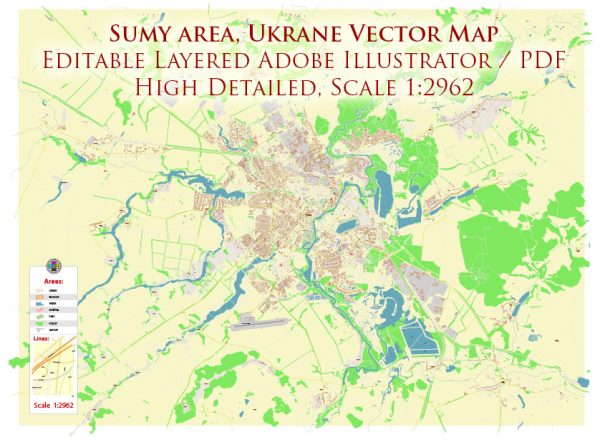Some specific and detailed information about the political and economic history of Sumy, Ukraine.
Sumy is one of the administrative regions in Ukraine, and its history is intertwined with the broader history of the country. However, I can provide a general overview of the historical and economic context of Ukraine, and you can use this information as a starting point for further research on Sumy specifically.
Historical Overview:
- Early History: The region that is now Ukraine has a rich history dating back to ancient times. Various tribes and peoples, including Scythians and Sarmatians, inhabited the area.
- Kyivan Rus: In the medieval period, the region became a part of Kyivan Rus, a federation of East Slavic tribes. Kyivan Rus played a crucial role in the development of Eastern Slavic culture and identity.
- Mongol Invasion: In the 13th century, the Mongols invaded and occupied Kyivan Rus, leading to a period of Mongol domination.
- Lithuanian-Polish Commonwealth: In the late medieval and early modern periods, the territory of present-day Ukraine was often part of the Lithuanian-Polish Commonwealth. This era saw the adoption of Christianity and the emergence of a distinct Ukrainian identity.
- Cossack Hetmanate: In the 17th century, the Cossacks, a semi-military group, played a significant role in the region. The Cossack Hetmanate emerged as an autonomous entity, asserting its independence from external control.
- Imperial Russia: The 18th century saw the gradual incorporation of Ukrainian territories into the Russian Empire. This marked a period of cultural and political integration.
- Soviet Era: In the 20th century, Ukraine went through significant political upheavals, including the Ukrainian War of Independence (1917-1921) and the establishment of the Ukrainian Soviet Socialist Republic as part of the Soviet Union.
- Post-Soviet Independence: Ukraine declared its independence from the Soviet Union in 1991, and since then, it has been working on building its political and economic institutions.
Economic Overview:
- Soviet Period: During the Soviet era, Ukraine, including the Sumy region, was an important industrial and agricultural area. The economy was centrally planned and focused on heavy industry.
- Post-Soviet Transition: The dissolution of the Soviet Union led to economic challenges as Ukraine transitioned to a market-oriented economy. This period involved privatization, economic reforms, and the development of new economic structures.
- Agriculture: Ukraine is known for its fertile soil, and agriculture has been a crucial part of its economy. Crops such as wheat, barley, and sunflowers are significant contributors to the agricultural sector.
- Industry: Sumy, like many other regions in Ukraine, has historically been involved in industrial activities. Machinery, metalworking, and chemical industries are notable components.
- Challenges: Ukraine has faced economic challenges, including corruption, political instability, and regional disparities. Efforts have been made to address these issues and promote economic growth.
For more specific and up-to-date information on the political and economic history of Sumy, it is recommended to consult recent academic sources, local historical archives, or official publications from Ukrainian sources. Additionally, news sources and government publications can provide insights into the current economic and political situation in the region.


 Author: Kirill Shrayber, Ph.D.
Author: Kirill Shrayber, Ph.D.